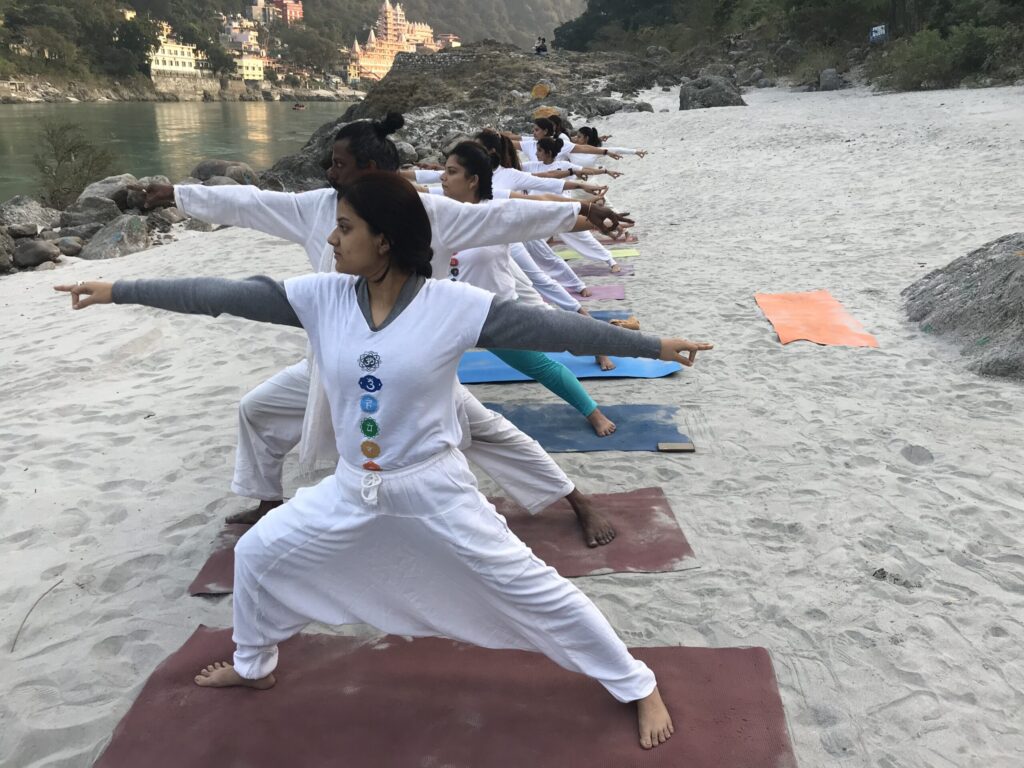How to Choose the Right 200-Hour Yoga Teacher Training Program
Selecting the right 200-hour Yoga Teacher Training (YTT) program is a crucial decision that can shape your future yoga journey. With so many options available worldwide, it can be overwhelming to decide which program is best suited to your needs, goals, and lifestyle. This article will guide you through the key factors to consider when choosing the right 200-hour YTT, ensuring that your training experience is both fulfilling and aligned with your aspirations.
Understanding Your Goals
The first step in choosing the right 200-hour YTT program is to clearly understand your goals. Are you looking to deepen your personal practice, or do you aspire to teach yoga professionally? Your goals will influence the type of program you choose. For instance, if you’re primarily focused on personal growth, a program with a strong emphasis on yoga philosophy and spiritual practice might be more suitable. Conversely, if you’re looking to start a career as a yoga teacher, you might prioritize a program that offers comprehensive teaching methodology and practical experience.
Quote: “Clarity precedes success.” — Robin Sharma.
Understanding your goals also involves reflecting on the style of yoga you wish to study. Yoga encompasses a wide range of styles, from the vigorous and physically demanding Ashtanga to the gentle and restorative Yin Yoga. Consider what resonates with you most and look for a program that specializes in that style. It’s also worth exploring programs that offer a balanced curriculum, providing exposure to multiple styles and approaches.
Researching the Curriculum
The curriculum is the heart of any YTT program. A well-rounded 200-hour YTT curriculum should cover a variety of topics, including asanas (postures), pranayama (breathing techniques), meditation, anatomy, yoga philosophy, and teaching methodology. It’s essential to review the curriculum in detail to ensure it aligns with your goals and interests.
Table: Essential Components of a 200-Hour YTT Curriculum
| Component | Focus |
| Asanas | Alignment, modifications, and sequencing of yoga postures. |
| Pranayama | Breath control techniques for energy management. |
| Meditation | Practices to develop mindfulness and inner peace. |
| Yoga Philosophy | Study of ancient texts and their application to modern life. |
| Anatomy and Physiology | Understanding the human body in relation to yoga practice. |
| Teaching Methodology | Skills for effectively guiding and instructing yoga classes. |
In addition to the core subjects, some programs offer specialized modules, such as Ayurveda, yoga therapy, or prenatal yoga. These can be valuable if you have specific interests or wish to develop a niche in your teaching practice. Be sure to choose a program that not only covers the basics but also offers depth in areas that excite you.
Considering the Location and Schedule
The location of your YTT program can significantly impact your experience. Some students prefer to train in the birthplace of yoga, such as Rishikesh, India, where they can immerse themselves in the traditional yogic culture. Others might choose a retreat-style program in a peaceful, natural setting, which offers a break from daily life and allows for deep immersion in the practice. Alternatively, urban programs might appeal to those who want to maintain their daily routines while undergoing training.
Quote: “The environment you choose plays a significant role in your progress.” — Anonymous.
The schedule is another important consideration. Some programs are intensive, lasting four to six weeks, while others are spread out over several months, allowing students to train part-time while managing other commitments. Reflect on your personal circumstances and choose a schedule that is realistic and sustainable for you.
Evaluating the Teachers
The quality of the teachers in a YTT program is one of the most critical factors to consider. Experienced, knowledgeable, and compassionate instructors can profoundly influence your learning experience. Research the teachers’ backgrounds, including their training, teaching experience, and areas of expertise. Look for instructors who have extensive experience in the style of yoga you wish to learn and who have a teaching philosophy that resonates with you.
If possible, attend a class or workshop with potential instructors before committing to a program. This will give you a sense of their teaching style and whether it aligns with your learning preferences. Additionally, consider reading reviews or testimonials from past students to gain insight into the teachers’ strengths and the overall training experience.
Accreditation and Certification
When choosing a YTT program, it’s important to ensure that the course is accredited by a reputable organization, such as Yoga Alliance. Accreditation guarantees that the program meets specific educational standards and that your certification will be recognized globally. This is particularly important if you plan to teach yoga professionally, as many studios and employers require instructors to have a certification from an accredited program.
Table: Key Considerations for YTT Accreditation
| Accreditation Body | Why It Matters |
| Yoga Alliance | Global recognition and standardization of training quality. |
| International Yoga Federation | Accreditation recognized in various countries around the world. |
| Other Reputable Bodies | Ensure legitimacy and high educational standards. |
In addition to accreditation, inquire about the certification process. Some programs require students to complete a final teaching exam or submit a written assignment to receive their certification. Understanding these requirements in advance will help you prepare and succeed in the program.
Assessing the Cost
The cost of a 200-hour YTT program can vary widely depending on factors such as location, duration, and the level of accommodation provided. While it’s important to consider your budget, remember that the cheapest option may not always be the best. Investing in a quality program with experienced instructors and a comprehensive curriculum is likely to offer better long-term value.
When assessing the cost, consider what is included in the program fee. Some programs offer all-inclusive packages that cover tuition, accommodation, meals, and materials, while others may charge separately for these elements. Be sure to factor in additional costs, such as travel expenses, visa fees (if applicable), and any required textbooks or equipment.
Quote: “Invest in yourself. Your career is the engine of your wealth.” — Paul Clitheroe.
Considering the Community
The community aspect of a YTT program can greatly enhance your experience. Many programs foster a sense of community among participants, encouraging collaboration, mutual support, and lasting friendships. Consider the size of the group — some students thrive in larger groups with diverse perspectives, while others prefer the intimacy of a smaller cohort. Reflect on what kind of environment will help you feel supported and inspired throughout your training.
Quote: “Surround yourself with those who only lift you higher.” — Oprah Winfrey.
Additionally, consider the broader community within the training location. For example, if you choose to study in a traditional yoga center in India, you may have the opportunity to participate in local cultural activities, rituals, and festivals, enriching your overall experience.
Conclusion
Choosing the right 200-hour Yoga Teacher Training program is a deeply personal decision that requires careful consideration of your goals, interests, and circumstances. By taking the time to research and reflect on the factors discussed in this article, you can find a program that not only meets your needs but also sets the stage for a transformative and rewarding journey in yoga.
Frequently Asked Questions (FAQ)
Q1: How do I know if a YTT program is accredited?
You can check the accreditation status of a YTT program by visiting the website of the accrediting body, such as Yoga Alliance. Accredited programs will typically display their accreditation status on their own websites as well.
Q2: What should I do if I can’t decide on a specific style of yoga?
If you’re unsure about which style to choose, consider a program that offers exposure to multiple styles. This approach allows you to explore different methods and find what resonates with you the most.
Q3: Can I complete a YTT program while working a full-time job?
Yes, many YTT programs offer part-time options that allow you to balance training with other commitments. Look for a program with a flexible schedule that accommodates your work hours.
Q4: Is it necessary to travel abroad for a YTT program?
No, you don’t have to travel abroad to complete a YTT program. Many high-quality programs are available locally or online. However, training in a different location can offer a unique cultural experience and deepen your immersion in the practice.
Q5: What should I bring to a YTT program?
Most YTT programs will provide a list of recommended items to bring, such as a yoga mat, comfortable clothing, notebooks, and any required textbooks. If you’re traveling to a new location, consider packing items that will help you feel comfortable and settled in your new environment.



